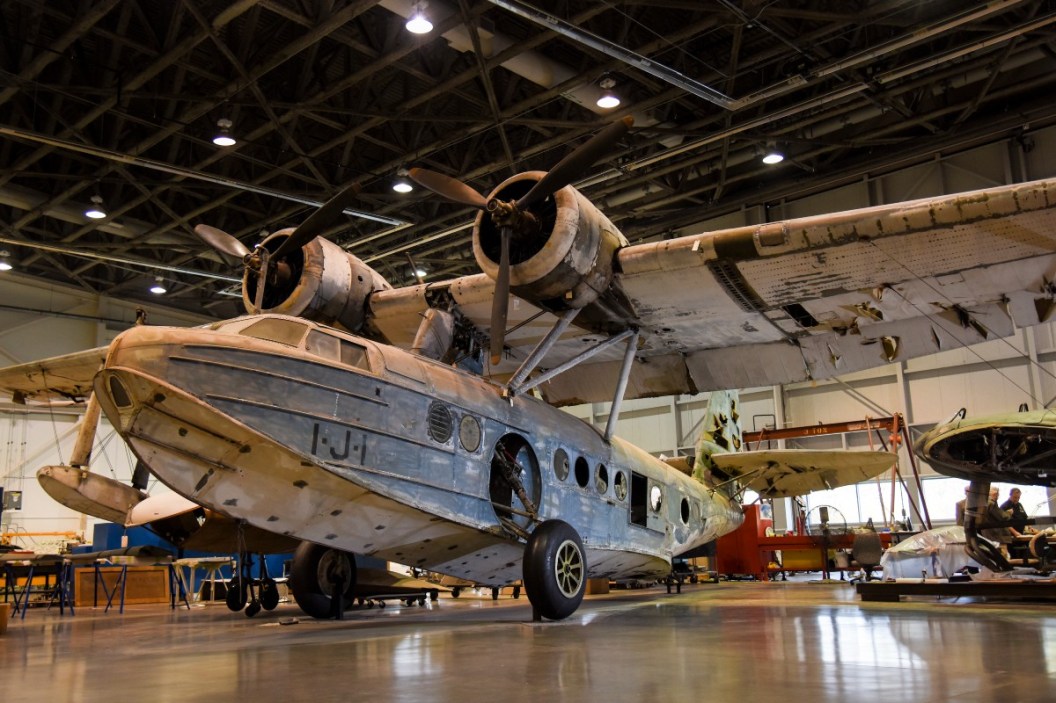The Sikorsky JRS-1 is historic to say the least, but it's not necessarily due to its overwhelming firepower or mind-blowing innovation that changed aircrafts forever. In fact, it was often referred to as a "flying pickup truck" (more accurately, it was a flying boat, due to its amphibious qualities) and was used by the U.S. military as part of a noncombat utility squadron, with tasks such as aerial photographs and mail delivery to U.S. Navy troops on Hawaiian islands.
Of the nearly 20 JRS-1s made for military action, only one survived the Pearl Harbor attacks in 1941, making it a crucial part of American military history.
The Story Behind the Sikorsky JRS-1
Now, it's important to note that the JRS-1 began life as the Sikorsky S-43 Baby Clipper. Fifty-three S-43s were built, and they were mainly used commercially by Pan American World Airways. In the late '30s, five of these aircraft were acquired by the U.S. Army Air Corps under the designation OA-8 and were used for freight and passenger transport. Seventeen aircraft were acquired by the U.S. Navy between 1937 and 1939 as the JRS-1, two of which served the U.S. Marine Corps.
So, why exactly is the JRS-1 so memorable? Well, this particular plane survived the 1941 attack on Pearl Harbor on December 7th. It's one of only three survivor military aircraft that were located at Pearl Harbor during the Japanese attack. Amazingly, the aircraft was unharmed at the time, and it was quickly put into action during World War II, even though it wasn't designed for that sort of operation. Navy crews piled into these planes as extra eyes and to act as a last-ditch defense. The main goal was to spot any sign of attacking forces and report it back before being shot down, and it was used for this for multiple days after the attack.
As it turns out, most of the aerial photographs of the attack's aftermath found in history textbooks were taken from these planes. Even after its survival and aftermath-recording tasks, it continued to be used in Pearl Harbor up until 1943, when it was overhauled and finally returned to use as a personal aircraft in California. After WWII was over, it was in research for the National Advisory Committee for Aeronautics (NACA) -- the organization before NASA -- then the JRS-1 was sent to storage in Georgia.
Today, the JRS-1 aircraft can be found on museum display at Steven F. Udvar-Hazy Center, which is the Smithsonian National Air and Space Museum (NASM)'s annex at Washington Dulles International Airport in Chantilly, Virginia. You'll find that the JRS-1 amphibian plane has multiple layers of paint on it, only confirming its historical presence. Back in its prime, the aircraft was painted with bright colors for a number of different reasons, including an easier search and rescue on the chance it was forced down, as well as a simple way to describe the duties of the aircraft and the crew that operated it.
One unique feature of the JRS-1 in its current state is the original logo painted on the side. You'll notice a flying pelican holding a mail bag, target practice sock, and a photographer caught on the beak. However, that only describes the original purpose of the plane, not the duties that it was forced to ensue following the attack. It's certainly a historic piece in the museum's collection, and if you're ever around Virginia, I'd say checking this thing out is well worth the time spent.
Products featured on Alt_driver are independently selected by our editors. However, when you buy something through our links, we may earn a commission.
This post was originally published on December 7, 2020.
